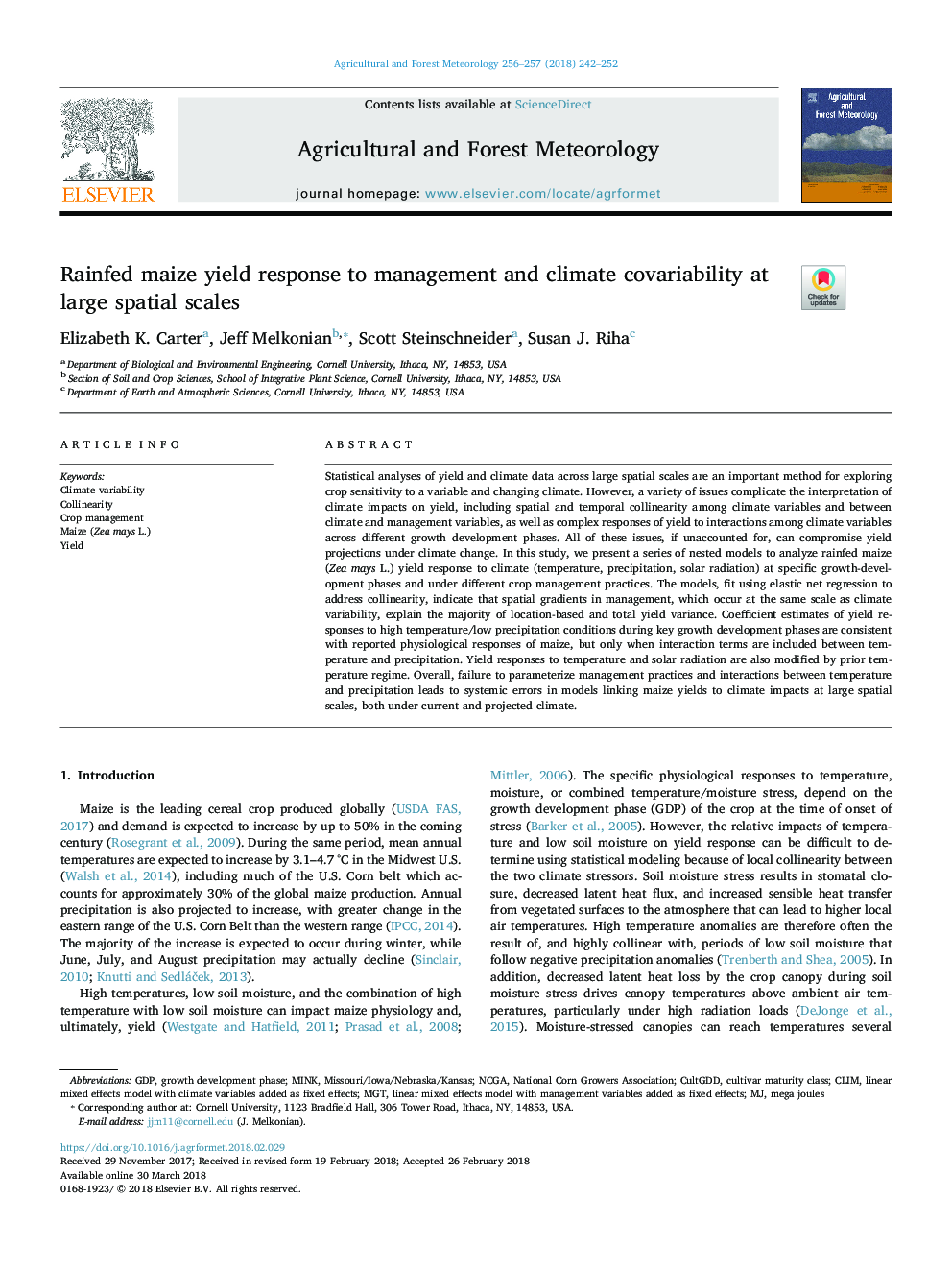| Article ID | Journal | Published Year | Pages | File Type |
|---|---|---|---|---|
| 6536696 | Agricultural and Forest Meteorology | 2018 | 11 Pages |
Abstract
Statistical analyses of yield and climate data across large spatial scales are an important method for exploring crop sensitivity to a variable and changing climate. However, a variety of issues complicate the interpretation of climate impacts on yield, including spatial and temporal collinearity among climate variables and between climate and management variables, as well as complex responses of yield to interactions among climate variables across different growth development phases. All of these issues, if unaccounted for, can compromise yield projections under climate change. In this study, we present a series of nested models to analyze rainfed maize (Zea mays L.) yield response to climate (temperature, precipitation, solar radiation) at specific growth-development phases and under different crop management practices. The models, fit using elastic net regression to address collinearity, indicate that spatial gradients in management, which occur at the same scale as climate variability, explain the majority of location-based and total yield variance. Coefficient estimates of yield responses to high temperature/low precipitation conditions during key growth development phases are consistent with reported physiological responses of maize, but only when interaction terms are included between temperature and precipitation. Yield responses to temperature and solar radiation are also modified by prior temperature regime. Overall, failure to parameterize management practices and interactions between temperature and precipitation leads to systemic errors in models linking maize yields to climate impacts at large spatial scales, both under current and projected climate.
Related Topics
Physical Sciences and Engineering
Earth and Planetary Sciences
Atmospheric Science
Authors
Elizabeth K. Carter, Jeff Melkonian, Scott Steinschneider, Susan J. Riha,
